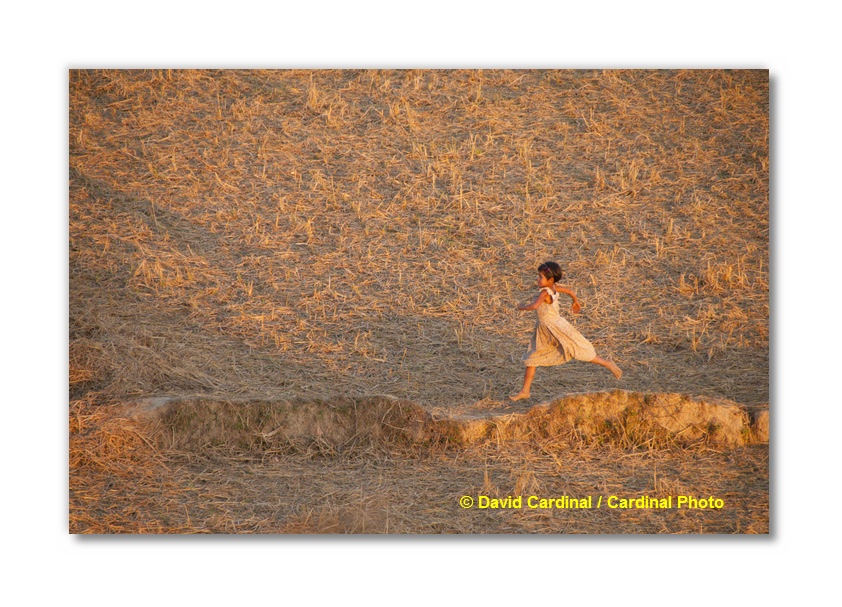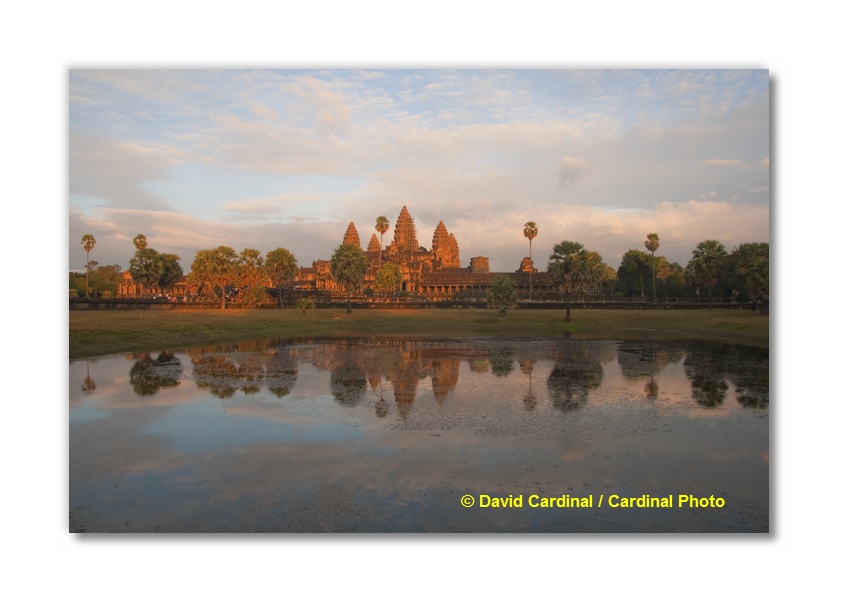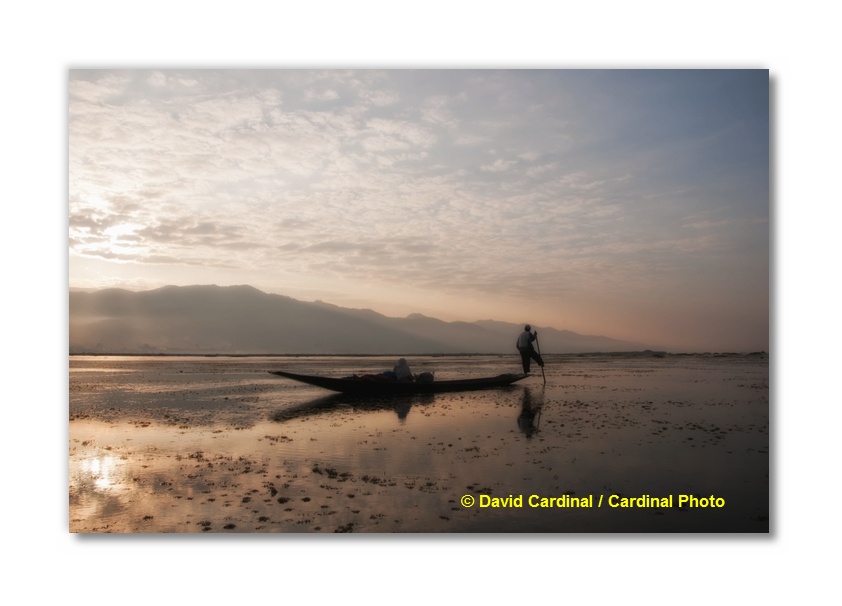- Photo Safaris
- Alaska Bears & Puffins World's best Alaskan Coastal Brown Bear photo experience. Small group size, idyllic location, deluxe lodging, and Puffins!
- Participant Guestbook & Testimonials Candid Feedback from our participants over the years from our photo safaris, tours and workshops. We don't think there is any better way to evaluate a possible trip or workshop than to find out what others thought.
- Custom Photo Tours, Safaris and Personal Instruction Over the years we've found that many of our clients & friends want to participate in one of our trips but the dates we've scheduled just don't work for them or they'd like a customized trip for their family or friends.
- Myanmar (Burma) Photo Tour Myanmar (Burma) Photo Tour December 2017 -- with Angkor Wat option
- Reviews Go hands-on
- Camera Reviews Hands-on with our favorite cameras
- Lens reviews Lenses tested
- Photo Accessories Reviews Reviews of useful Photo and Camera Accessories of interest to our readers
- Useful Tools & Gadgets Handy tools and gadgets we've found useful or essential in our work and want to share with you.
- What's In My Camera Bag The gear David Cardinal shoots with in the field and recommends, including bags and tools, and why
- Articles About photography
- Getting Started Some photography basics
- Travel photography lesson 1: Learning your camera Top skills you should learn before heading off on a trip
- Choosing a Colorspace Picking the right colorspace is essential for a proper workflow. We walk you through your options.
- Understanding Dynamic Range Understanding Dynamic Range
- Landscape Photography Tips from Yosemite Landscape Photography, It's All About Contrast
- Introduction to Shooting Raw Introduction to Raw Files and Raw Conversion by Dave Ryan
- Using Curves by Mike Russell Using Curves
- Copyright Registration Made Easy Copyright Registration Made Easy
- Guide to Image Resizing A Photographers' Guide to Image Resizing
- CCD Cleaning by Moose Peterson CCD Cleaning by Moose Peterson
- Profiling Your Printer Profiling Your Printer
- White Balance by Moose Peterson White Balance -- Are You RGB Savvy by Moose Peterson
- Photo Tips and Techniques Quick tips and pro tricks and techniques to rapidly improve your photography
- News Photo industry and related news and reviews from around the Internet, including from dpreview and CNET
- Getting Started Some photography basics
- Resources On the web
- My Camera Bag--What I Shoot With and Why The photo gear, travel equipment, clothing, bags and accessories that I shoot with and use and why.
- Datacolor Experts Blog Color gurus, including our own David Cardinal
- Amazon Affiliate Purchases made through this link help support our site and cost you absolutely nothing. Give it a try!
- Forums User to user
- Think Tank Photo Bags Intelligently designed photo bags that I love & rely on!
- Rent Lenses & Cameras Borrowlenses does a great job of providing timely services at a great price.
- Travel Insurance With the high cost of trips and possibility of medical issues abroad trip insurance is a must for peace of mind for overseas trips in particular.
- Moose Peterson's Site There isn't much that Moose doesn't know about nature and wildlife photography. You can't learn from anyone better.
- Journeys Unforgettable Africa Journeys Unforgettable -- Awesome African safari organizers. Let them know we sent you!
- Agoda International discounted hotel booking through Agoda
- Cardinal Photo Products on Zazzle A fun selection of great gift products made from a few of our favorite images.
- David Tobie's Gallery Innovative & creative art from the guy who knows more about color than nearly anyone else
- Galleries Our favorite images
DPS 7-02: Travel Security & Safety, plus Reviews of a new photo book option and other hot products
Feature Article: Staying Safe & Secure While you Travel
After writing my article for PC Magazine last year on the perils of un-secured e-Mail and after more than one friend had their laptop stolen while traveling I decided to get serious about data security for my travels--both around the US and internationally. I've come up with a set of tools and techniques that taken together can help you minimize the danger of losing any personal information or other valuable or private data you may have on your laptop or type into your web browser. I strongly recommend anyone who does very much travelling consider doing something like this.
Step 1: Guarding against Theft -- Protecting your Laptop & Data
There are several types of security issues when you are traveling. The most serious is probably just plain theft of your laptop. A few hotel rooms offer safes large enough to accommodate a laptop, but most don't. If your hotel does I recommend locking your laptop in there along with any extra cash or papers you don't need for walking around. If your hotel doesn't then your hotel room is probably still safer than an unattended vehicle (although if you have a driver who stays with the vehicle while you are touring then leaving it in the vehicle with the driver might actually be safer). If you have to leave your laptop in your hotel room lock it in a large, sturdy piece of luggage. Especially if you have other valuable gear there you may want to lock the luggage onto something immovable or at least heavy in the room using something like a Pacsafe PacSafe 140 which will make it very tough for anyone to take your bag or anything in it.
TIP: Even if your laptop doesn't fit in the room safe, a small hard drive with a backup of all your images might. It's well worth keeping an up to date backup copy and storing it someplace as safe as possible away from your laptop.
|
Especially if you have other valuable gear there you may want to lock the luggage onto something immovable or at least heavy in the room using something like a Pacsafe PacSafe 140 But no matter what you do you can't guarantee that your computer won't be taken. So what can you do to reduce the risk? Read on... |
The first thing I do is make sure my laptop and my camera equipment are insured. In my case on my business equipment insurance which I get at a reasonable price through NANPA. PPA also offers pro insurance to its members. If you are not a pro you can probably get your equipment insured for less money by adding it onto your homeowners insurance.
Next I encrypted my laptop's hard drive using PGP Whole Disk Encryption. This guarantees that the data on the disk is useless to anyone unless they are logged into my windows account. To complete that protection you need to make sure your computer is set to ask for your password any time you open the lid or wake it up. Otherwise the thief could use your current login to take your data.
As a photographer I always take two extra steps to help protect my images against the theft of my laptop. First, I backup my photos every day or two during the trip to an external hard drive which I do put in the hotel room safe or at least store someplace different from my laptop. And second, I usually travel with a combination card reader / hard drive (like a Hyperdrive) so I can continue to load images from my camera even if my laptop is stolen or broken.
Burmese girl running home after a busy day of playing in the fields. Nikon D300, 18-200mm lens at 200mm, f5.6 @ 1/500
Step 2: Guarding Against Theft -- Protecting your Camera Gear
Your laptop is not the only possible target of theft. In many cities thieves are known to slash camera straps and grab cameras right from photographers. Replacing your vendor provided strap with a re-inforced strap like the ones from UpStrap has a couple advantages. First, the strap is plain black and doesn't announce your camera vendor and model--no sense in advertising how expensive that camera on your shoulder really is. And the strap is almost impossible to slash so it will be much harder for someone to grab your camera. You still need to be careful not to leave the camera draped over a chair near a busy sidewalk or street. Your camera also can be insured on your business or homeowners insurance.
It's also important to think about your camera bag. Both its size and design can affect the safety of your gear. You want it to be small enough that you feel comfortable carrying it with you into restaurants or whereever else you plan to go (if you have a driver staying with your vehicle or can lock it and keep an eye on it then of course that's another nice option). But you also want to make sure your bag doesn't look too obviously like a photo backpack. I enjoyed traveling in Asia with the Lowepro Classified 250AW because it doesn't look like a camera bag and fit the cameras and lenses I needed to carry during the day along with my notes, paperwork and even guidebooks. When I don't need all the extra room the MP-7 from Moose Peterson & WRP is a stealthy looking small pack which holds a couple cameras and lenses. [NOTE: WRP is currently back-ordered on the popular MP-7, but they expect to have more in a month or so]
Step 3: Guarding your Personal Data
Now that we've taken care of protecting against hardware theft we can turn to thinking about our personal data and how it is used online. Any time you use your computer or even spend time using a computer at an internet café or other local establishment you are risking your personal data. The risk is greatest when using your own computer as potentially all of the data on it is at risk from snoopers on the same local network (whether wired or wireless), but even if you are just logging in to a shared computer anything you type or any information you look at can be snooped and potentially stolen.
There are several precautions you can take to nearly eliminate this threat. First is that any time you use your own computer make sure it has a firewall enabled and active. If you're using Vista, for example, make sure and tell Windows that the network is a Public network so it will try to prevent access to your local files from other computers on the network. Also, be very careful which networks you connect with. Many thieves operate by setting up phony "Free" Wifi networks in busy places like airport terminals and stealing any information typed by unsuspecting computer users who log in to the network through their router.
Those steps will help protect against the most obvious snooping, but everything you type can also be intercepted and stolen unless you take some further steps to secure your browser and your e-Mail. Fortunately there is a very cool and inexpensive solution called IronKey. I always travel with my IronKey 4GB Secure Flash Drive --an encrypted USB Flash Drive with some unique features making it perfect for the road warrior.
| The first thing the Ironkey does for me is provide a secure copy of Firefox I can use for browsing. It is installed completely on the IronKey itself so it is known "clean" and can't be contaminated by anything on my computer or even on the computer I'm using in an Internet Café. But the IronKey goes beyond that. Using a unique "secure sessions" feature, all traffic from my machine using Firefox is encrypted and routed through IronKey's own servers before being forwarded to the web site I'm browsing. That means anything I type is immune from snooping or theft on my local network so I can safely type in passwords or even credit card numbers without worrying they will be snooped. -- For even more security you can use the built-in password manager to remember your passwords and enter them for you, protecting you from key loggers which might be snooping while you browse. |
Angkor Wat at Sunset from our recent Asian Photo Safari. Nikon D300, 18-200mm lens at 200mm, f5.6 @ 1/500, -1 E.Comp
The IronKey itself is also a secure flash drive so I can safely store files on it knowing they can not be retrieved without my password. The memory on the drive is embedded in a block of epoxy so it can not be tampered with and will self-destruct if the wrong password is typed in ten times (don't forget your IronKey password!) This means I can also put other applications and data on the IronKey and know that they are secure. The most important application for me is Thunderbird--the free email client from the same folks who make Firefox. Sure, I use Outlook in my office, but there isn't any good way to make a traveling copy of Outlook to use in Internet Cafes. Fortunately Thunderbird can easily be installed onto a flash drive using the free PortableApps technology.
So for secure email while traveling I have two good choices. Either I can use a web interface to my email (gmail for example is a web interface by default) through the secure copy of Firefox on my Ironkey or I can use Thunderbird if I need a more powerful e-Mail client (it works with an POP3 or IMAP server including many web mail systems like gmail). Using the copy of Thunderbird on my flash drive doesn't automatically encrypt the emails themselves. To do that I have to make sure and set Thunderbird up to use SSL--and of course make sure my mail server supports SSL. If your mail server doesn't support SSL connections then you're best bet is to use whatever web mail interface your mail server provides through the secured copy of Firefox on your IronKey.
While all these steps may seem a little daunting they're very easy to get used to. I keep my IronKey on my keyring so I'm always in a good position to access my information safely and securely. Note that in many Internet Cafes the USB ports are disabled by default (to help protect their network from malware), but you can normally asked the staff to turn a USB port on for you so you can use the drive. And of course if you're using your own laptop you can simply plug the IronKey into any port. Similarly I was worried that needing to type my password in each time I woke up my computer would be a hassle. And it definitely is a little less convenient. But the peace of mind knowing that the data on it is safe is well worth it for me!
Our World Views 2009 Cardinal Photo Calendars are now available for purchase on Zazzle.
Fun with Infraed...
Follow-up on our Infrared Article: If you're as excited by the possibilities of Infrared as I am you're probably looking around your studio already for an old camera body you can convert. If not, older used D-SLRs are inexpensive enough in the for sale forum on our site or on eBay that you may be able to experiment. Once you've got a camera you want to convert I strongly recommend LifePixel as a very service-oriented and professional company that does an excellent job and is happy to help answer any questions. They can do a traditional IR conversion, or a trendier "enhanced infrared" that lets more of the color through. They even offer to make your camera full spectrum (by completely removing the IR filter and replacing it with clear glass). That provides great flexibility but because you need to use a filter to shoot IR you can't use the viewfinder and autofocus. As I've mentioned I went for the most traditional conversion--standard IR with a 720nm cutoff--and have been very happy with it. If you use LifePixel make sure and let them know we sent you!
Cardinal Photo Safari Update
The best news for the many of you who have been asking is that we'll be returning to Africa in November, 2009 for another Botswana Wildlife Photo Safari. The Botswana trip is already half full, so if you want to join us now is the time to act! As those of you who have been with us before know, there is nowhere else in the world that compares to a small group specialized photo safari to the private concessions in Botswana. Not only is the wildlife abundant, but the camps are gorgeous. Most importantly there are strict limits on the number of people and vehicles in each concession--and for our photo safaris, a strict limit on the number of people per vehicle. Many days we may not see anyone except the handful of people from our group.The year 2009 will mark my 7th photo safari to the concessions in Botswana. Every trip we've seen not just plenty of lions, hippos, giraffes and antelopes but also cheetahs, leopards and wild dogs. Truly a special trip.
The Botswana, Texas and Alaska Grizzly Bear trips are filling up, but we have a few slots left so if you're interested please act soon by signing up or emailing us at safaris [at[ cardinalphoto.com. Thanks!--David
David's Favorite New Products
Blurb Photo Books with Premium Paper
I get asked all the time about easy ways to show off photos after a trip without having to print and carry a large, expensive and fragile portfolio of hand-printed images. We've written about Blurb before--as the easiest and most cost effective way to make nice looking photo books from your trips. They've just added a nice new option where you can get your books printed on premium paper for a few dollars more. What I love about this is I can now publish a Blurb book in a couple hours with my favorite photos from a trip and then have it as an effective way to show those photos. Sure, they're not as impressive as the prints that roll off my Epson, but for a small amount of money I have a portable record of the trip I can share without worry. If it gets damaged or spilled on it's easy enough to print another. You can see the photo book I put together with some of the highlights from my Asia trip in my bookstore on Blurb.
Lowepro Classified 250 AW
In general I really liked the bag and look forward to using it as I cover PMA in a few weeks--probably with a Lowepro Deluxe Shoulder strap. You can get the Lowepro Classified 250 AW for $210 from Amazon: Lowepro Classified 250 AW Shoulder Bag (Black)
If you don't need the large size and laptop slot of the 250 the Classified 160 is only $150 and more convenient to use: Lowepro Classified 160 AW Shoulder Bag (Black)
Filter Favorites
You've probably noticed I've become a big fan of the new nik Color Efex 3.0 filters. Many of them provide the same functionality I did with laborious use of Actions and hand-tweaked filters before but they do it quickly and simply. And some of the filters like the Glamour Glow are novel treatments that are new tools I've been able to add to my arsenal. B&H has the Color Efex Pro 3.0 filters for sale for $249. I also used nik's SilverEfex Pro to convert the Infrared images in this article to true Black and White. I even created my own preset which works really well (post on our forums if you want me to send you a copy).
DigitalPro User Tips
TIP 1: Quick File Copy: This one is thanks to Moose. He asked me whether we could add a feature to DigitalPro so that by simply clicking a button the selected images would be moved to a specific folder (for burning or some other further processing step). It turns out that you can do that already with a couple simple steps:
- Create a 1-line ".bat" file that contains "Copy %1 <your folder location"
- Set one of your Editor locations in Tools->Options->Editor to the .bat file you created in step 1
- Simply launch that editor on your images and they'll be copied to whereever you specified.
From this simple example you can probably also tell that you could build other simple scripts to do other file actions.
TIP 2: Keyword Filter: New to DigitalPro 5.0.9 is a filter you can apply to the Keyword or Category tree so it only displayes terms related to the one you put in the filter box. Personally I've found it to be a real life-saver when keywording many images in a single session. Let us know what you think about it in our forums.
Pro Shooters LLC, released DigitalPro™ 5 for Windows, a substantial upgrade to their award winning integrated image browser and image cataloging software. DigitalPro handles the entire image review and cataloging process, including loading, reviewing, renaming, captioning and filing images. With DigitalPro’s image catalog users can quickly retrieve images based on categories, keywords, captions or shooting data. For editing DigitalPro integrates seamlessly with Adobe Photoshop, Photoshop Elements, Nikon Capture and Capture NX, Bibble, or the user’s choice of photo editors. Fully Functional Trial and Upgrades avaiable for download now.
Shan fisherman in Inle Lake, Burma (Myanmar) demonstrating "one-legged" Rowing technique returning home from fishing with his son. Nikon D300, 18-200mm lens at 18mm, f22 @ 1/500s, -1 E.Comp, from boat using VR
Recent Photography News from nikondigital.org
February 10: An interesting report on camera & lens failures in Antartica has been posted by Michael Reichmann. Of particular note was the high failure rate among the Canon 5D Mark II and the perfect track record of the Nikon bodies. Read online.
February 4: Alamy has released some great data on the Stock photo business in 2008. They had revenues of $31M from their image library of 15 million images (an average of $2/image). They paid out just over $20M of that in royalties to contributors. Out of their top 100 photographers, 69 had less than 10,000 images in the library and averaged $13 per image while 31 had more than 10,000 images and averaged $3 per image. Their top 100 photographers made from $26K in royalties to $285K in royalties.
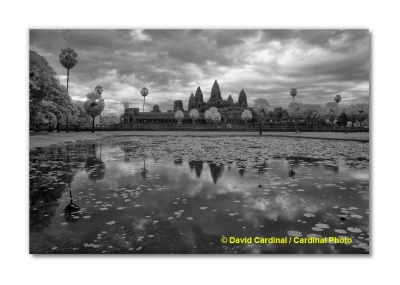 |
February 4: DPS 7-01 is online. Featured is an all new article and Advanced Tips and Techniques for shooting Infrared (a follow up to our intro article) as well as reviews of the new LowePro Classified 250 AW and Hybrid NiMH batteries. DPS7-01, the nikondigital.org newsletter, is now available online. |
February 3: Nikon & Casio unveil "time-traveling" cameras: The Nikon Coolpix P90 and the Casio EX-F1 and EX-FH20 all allow continuous captures of low resolution images (3MP or so), allowing you to go back and select an image from exactly when or even before you pressed the shutter! Nikon calls the feature Continuous Scene Mode while Casio uses the more technical but perhaps more obvious term Lag Correction. The Casios can also capture some amazing high speed video.
January 31: Nikon Releases a helpful guide to the Nikon D3 for Sports Photographers--Available as a free download from Nikon USA.
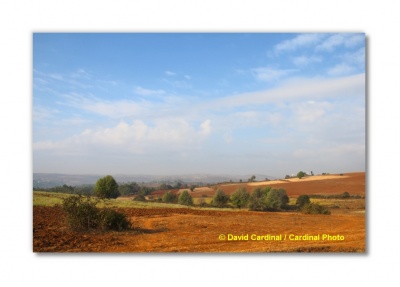
Burma Countryside in the Shan State, near Inle Lake |
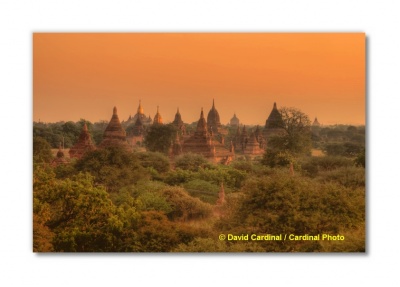
Plain of Temples, Bagan, Burma (Myanmar) at Sunrise |
If you have a hot tip or news item for DigitalPro Shooter, write us at dps@proshooters.com. If your tip or news item is picked as the Shooters' Tip of the Week, we'll send you a really cool DigitalPro hat! Or just write us to let us know what you think of the newsletter.
To keep up with the latest articles and reviews, join me at http://www.nikondigital.org. For the latest versions of DigitalPro, visit http://www.proshooters.com/dp.
Good shooting!
--David Cardinal, editor DigitalPro Shooter
nikondigital.org / Pro Shooters LLC
- Log in to post comments


